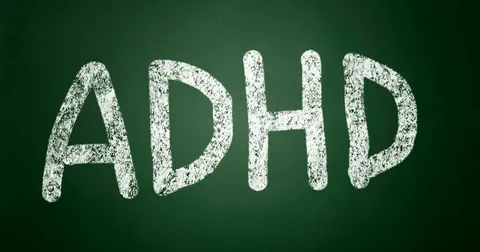
Attention-deficit/hyperactivity disorder (ADHD) is a neurodevelopmental disorder characterized by persistent patterns of inattention, hyperactivity, and impulsivity that significantly impact daily functioning and quality of life. While these symptoms are common in childhood, they can persist into adolescence and adulthood, posing challenges across various life domains. Understanding the core symptoms of ADHD is essential for accurate diagnosis, effective management, and improved outcomes for individuals affected by this condition.
What is ADHD?
ADHD is one of the most common neurodevelopmental disorders, affecting an estimated 5-7% of children and adolescents worldwide. It is characterized by a persistent pattern of inattention and/or hyperactivity-impulsivity that interferes with functioning or development.
Types of ADHD:
- Predominantly Inattentive Presentation: Individuals primarily display symptoms of inattention without significant hyperactivity-impulsivity.
- Predominantly Hyperactive-Impulsive Presentation: Individuals primarily display symptoms of hyperactivity-impulsivity without significant inattention.
- Combined Presentation: Individuals display symptoms of both inattention and hyperactivity-impulsivity.
Core Symptoms of ADHD
1. Inattention
Inattention refers to difficulty sustaining attention on tasks or activities, being easily distracted, and frequently making careless mistakes. Common signs of inattention include:
- Difficulty organizing tasks and activities
- Avoidance of tasks that require sustained mental effort
- Forgetfulness in daily activities
- Losing essential items (e.g., keys, school supplies)
- Frequently shifting focus from one task to another
- Difficulty following instructions or completing assignments
2. Hyperactivity
Hyperactivity involves excessive motor activity, such as fidgeting, restlessness, and an inability to stay seated in situations where remaining seated is expected. Signs of hyperactivity may include:
- Fidgeting with hands or feet
- Difficulty remaining seated (e.g., squirming in chair)
- Running or climbing excessively in inappropriate situations
- Feeling restless or on the go
- Talking excessively or blurting out answers before questions are completed
3. Impulsivity
Impulsivity refers to acting without forethought or consideration of consequences. Impulsive behaviors often occur without adequate planning or inhibition, leading to difficulties in social, academic, and occupational settings. Common signs of impulsivity include:
- Acting without considering potential consequences
- Difficulty waiting for one’s turn
- Interrupting or intruding on others’ conversations or activities
- Difficulty following rules or regulations
- Making hasty decisions without fully evaluating options
Diagnosis of ADHD
Diagnosing ADHD involves a comprehensive evaluation conducted by a qualified healthcare professional, typically a psychiatrist, psychologist, or pediatrician. The diagnostic process includes:
- Clinical Interview: Gathering information about the individual’s developmental history, symptoms, and functioning across various settings (e.g., home, school, work).
- Symptom Assessment: Assessing the presence and severity of ADHD symptoms using standardized rating scales and clinical observation.
- Medical Examination: Ruling out other medical or psychiatric conditions that may mimic or coexist with ADHD.
- Collateral Information: Obtaining information from parents, teachers, or other caregivers to corroborate symptom reports and assess functional impairment.
Treatment of ADHD
Effective management of ADHD typically involves a multimodal approach tailored to the individual’s needs and preferences. Treatment options may include:
- Medication: Stimulant medications (e.g., methylphenidate, amphetamines) and non-stimulant medications (e.g., atomoxetine, guanfacine) are commonly used to manage ADHD symptoms.
- Behavioral Therapy: Behavioral interventions, such as cognitive-behavioral therapy (CBT) and parent training, focus on improving organizational skills, time management, and coping strategies.
- Educational Interventions: Academic accommodations and support services, such as classroom modifications and tutoring, can help address academic challenges associated with ADHD.
- Lifestyle Modifications: Healthy lifestyle habits, including regular exercise, adequate sleep, and a balanced diet, can complement medical and behavioral interventions.
Challenges and Complications
Untreated or inadequately managed ADHD can lead to various challenges and complications, including:
- Academic underachievement and learning difficulties
- Impaired social relationships and peer interactions
- Occupational problems and reduced job performance
- Increased risk of substance abuse and addiction
- Mental health comorbidities, such as depression and anxiety disorders
Conclusion
Hyperactivity, inattention, and impulsivity are the hallmark symptoms of ADHD, a neurodevelopmental disorder that affects individuals across the lifespan. Understanding these core symptoms is crucial for accurate diagnosis, effective management, and improved outcomes for individuals with treatment ADHD. Through a combination of medication, behavioral therapy, educational interventions, and lifestyle modifications, individuals with ADHD can learn to manage their symptoms and lead fulfilling lives. Early identification and intervention are essential for minimizing the impact of ADHD on academic, social, and occupational functioning, promoting better long-term outcomes for affected individuals.
